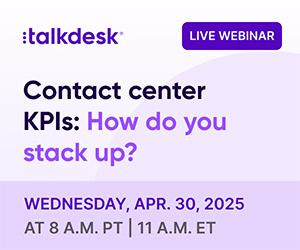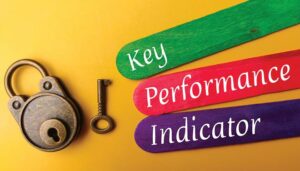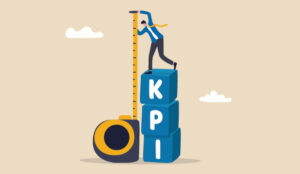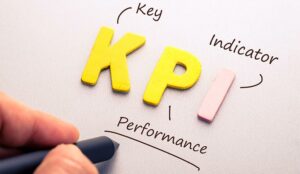Celia Cerdeira at Talkdesk explores 11 essential contact centre KPIs to help a company monitor efficiency and set meaningful goals for improving customer service.
Building an effective contact centre is only half the battle – the other part of the challenge is measuring its success.
Managers, decision-makers, and company stakeholders need to agree on the contact centre key performance indicators (KPIs) that matter most.
The right KPIs can reveal how well your customer support agents and tools are performing, guiding you towards continuous improvement.
Which Contact Centre KPIs Are Most Important?
A given company’s most important contact centre KPIs will depend to some degree on its goals, services, and industry.
For example, a healthcare and life sciences brand might focus on tracking KPIs associated with customer relationship building, such as patient retention rate.
A financial services or insurance contact centre might concentrate on its first contact resolution (FCR) rate, which is one of the key contact centre metrics for customer retention and may correlate with whether its clients trust their wealth management services.
While KPIs might vary across industries, some are universally valuable for gauging the efficiency and effectiveness of a contact centre. Here are some contact centre key performance indicators worth monitoring:
1. Average Handle Time (AHT)
An organization can evaluate individual agent and team performance by tracking AHT (how long an agent spends per customer interaction on average).
It can then identify and reward top-performing agents and provide additional training to those falling behind. Knowing AHT can help a company schedule its agents more efficiently, eliminate bottlenecks, and improve inefficient workflows.
Problems such as untrained or unskilled agents, inefficient workflows, complicated customer inquiries, outdated systems, an influx of after-contact tasks, and poor management can increase AHT.
Reducing average handle time can improve interaction duration, customer satisfaction levels, and contact centre productivity.
2. First Contact Resolution Rate (FCR)
FCR measures the percentage of customer issues resolved in the first interaction and indicates agent efficiency and effectiveness.
Agents with sufficient training, tools, and information are more likely to solve a problem successfully on the first try.
High FCR rates save customers time and reduce the overall workload on support teams by minimizing repeat contacts. This efficiency leads to lower operational costs and enhances the overall customer experience.
To improve FCR, create a seamless omnichannel experience, ensure all agents have the necessary resources, and explore and address the root causes of customers’ issues.
3. Customer Satisfaction (CSAT) Surveys
These surveys tell a company how customers feel about the organization after purchasing a product, completing a transaction, or interacting with the customer service team.
A company can implement CSAT surveys via email, mail, text, or phone and use the results to focus its improvement efforts.
To make an effective customer satisfaction survey, clearly define desired learnings and craft questions accordingly. Remember that customers are busy, so keep surveys short and sweet, with questions based on rating scales and multiple-choice answers.
4. Net Promoter Score (NPS)
The net promoter score is an effective way to measure customer experience. NPS is a measurement of customer loyalty that represents how likely a customer is to recommend a company to others.
Asking, “How likely are you to recommend us to a friend?” tells an organization how many loyal customers are ready to become brand advocates and provides insights into potential detractors.
5. Customer Lifetime Value (CLV)
CLV represents the total value a customer has brought to a company over the entire relationship. This value encompasses the initial purchase and all future purchases a customer could make.
Once a company knows its customers’ CLVs, it can identify which customer segments will be the most valuable over time and adjust its strategies.
6. Customer Effort Score (CES)
This metric represents how much effort customers must dedicate to resolving issues, finding the information they need, or otherwise walking away satisfied.
It can provide insights into how customers feel about an organization, as customers who can easily use a product or service or receive the assistance they need are more likely to be loyal.
7. Agent Turnover Rate
Agent turnover rate is the percentage of agents who leave an employer within a specific timeframe, whether voluntarily or involuntarily – and this metric should be as low as possible.
A high agent turnover rate impacts team morale and productivity. Plus, it takes time, energy, and money to find, hire, and train new employees.
High agent turnover rates can result in a loss of knowledge and a drop in service quality and consistency.
It can also impact a company’s reputation among customers and potential employees, as extremely high turnover rates could indicate a bad work environment or poor management.
8. Average Wait Time
Average wait time refers to how long customers wait before connecting with an agent. If customers are left waiting long enough, they can grow frustrated and abandon a queue altogether, so it’s important to trim a contact centre’s average wait time down as much as possible.
9. Average Abandonment Rate
The average call abandonment rate is the percentage of customers who finish an interaction before reaching a resolution within a given time.
High abandonment rates can signal underlying problems such as long wait times, inefficient processes, or inadequate support.
Aiming for low abandonment rates can improve customer satisfaction, enhance customer experience, and increase the likelihood of resolving issues on the first contact.
To do this, ensure the contact centre is well-staffed, agents have appropriate training, and the contact centre relies on updated technology to streamline interactions.
10. Occupancy Rate
This metric represents the time a contact centre agent spends communicating with customers or completing related tasks.
While it can be tempting to try increasing the occupancy rate as high as possible, it’s crucial to balance maximizing efficiency and preventing burnout.
A reasonable occupancy rate allows agents to manage customer interactions thoroughly and take necessary breaks, leading to better performance, higher morale, lower turnover, and higher customer satisfaction.
11. Customer Service Level (CSL)
Pay attention to customer service level. This metric measures how accessible a company is to customers and relates to the overall quality of service and customer satisfaction.
A good CSL indicates that customers can quickly get help and speaks to a company’s ability to allocate resources and staff effectively. A poor CSL means the contact centre needs to make changes to improve its efficiency and responsiveness.
Improve Customer Outreach, One Contact Centre Metric at a Time
Tracking and optimizing the most critical contact centre KPIs is vital for any company looking to improve customer satisfaction and retention and gain loyal brand promoters.
Everything from agent turnover rate to average handle time can impact the customer experience. It can make the difference between someone who never comes back and someone who becomes an active advocate for the brand.
This blog post has been re-published by kind permission of Talkdesk – View the Original Article
For more information about Talkdesk - visit the Talkdesk Website
Call Centre Helper is not responsible for the content of these guest blog posts. The opinions expressed in this article are those of the author, and do not necessarily reflect those of Call Centre Helper.
Author: Talkdesk
Published On: 16th Sep 2024 - Last modified: 22nd Oct 2024
Read more about - Guest Blogs, Celia Cerdeira, Talkdesk






 Talkdesk is a global customer experience leader for customer-obsessed companies. Our contact center solution provides a better way for businesses and customers to engage with one another.
Talkdesk is a global customer experience leader for customer-obsessed companies. Our contact center solution provides a better way for businesses and customers to engage with one another. 












